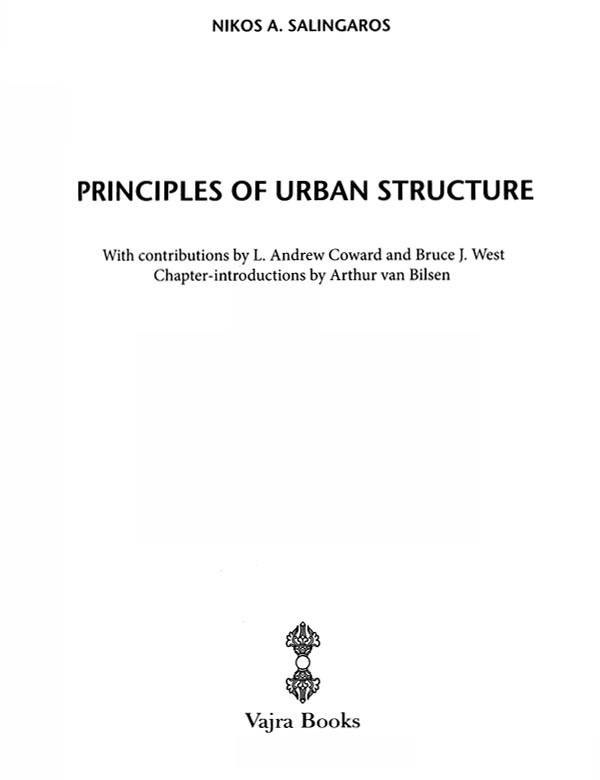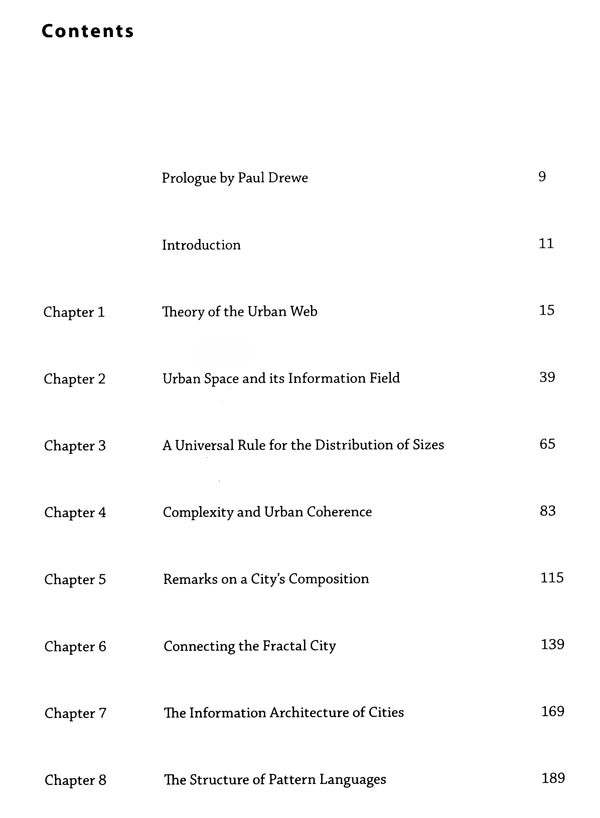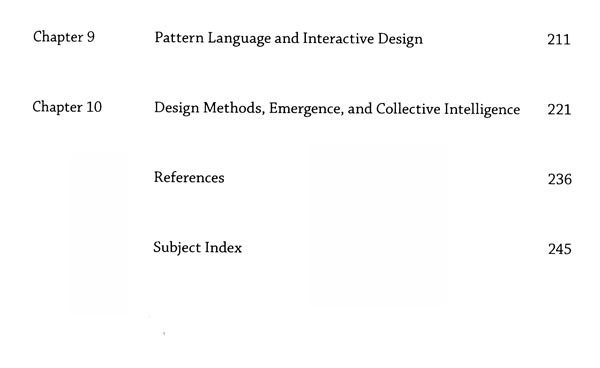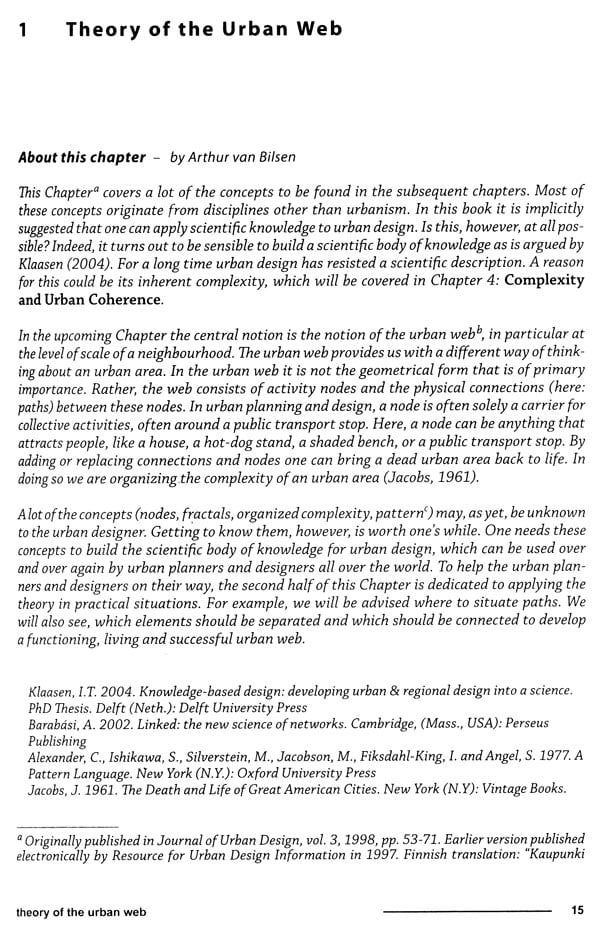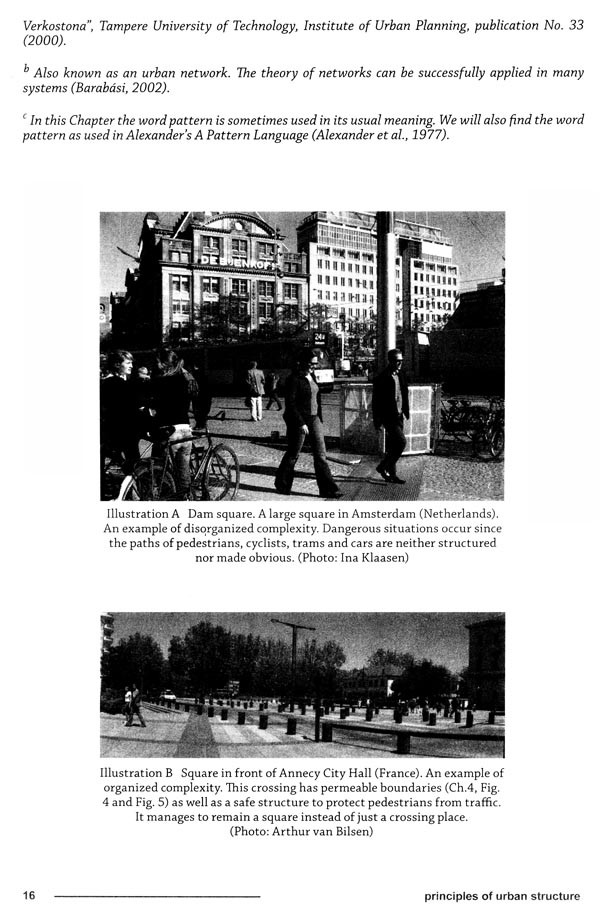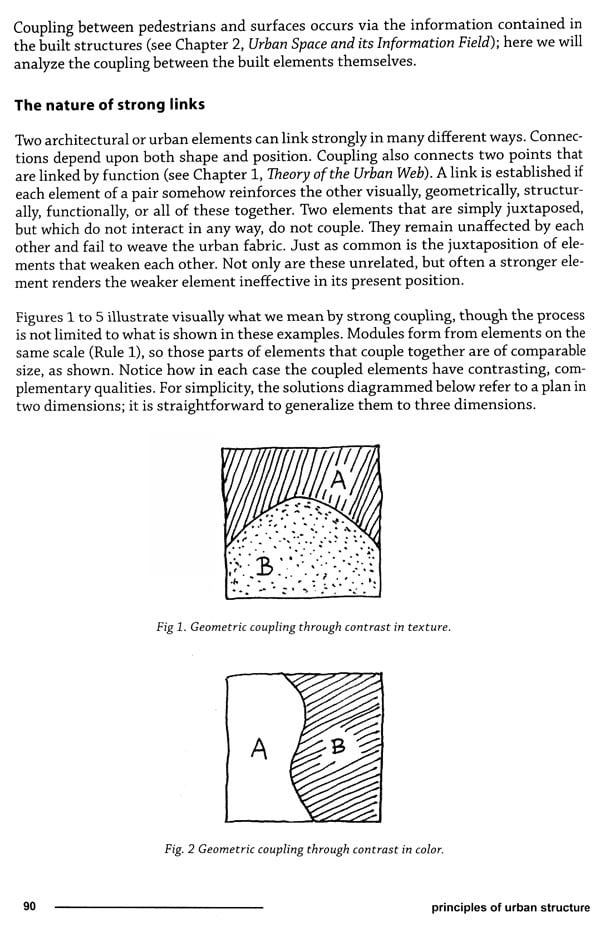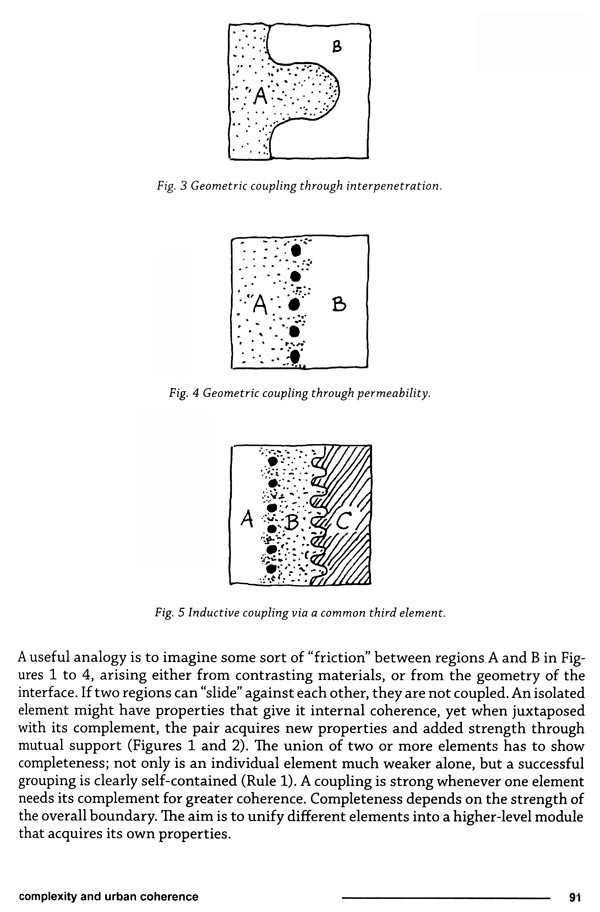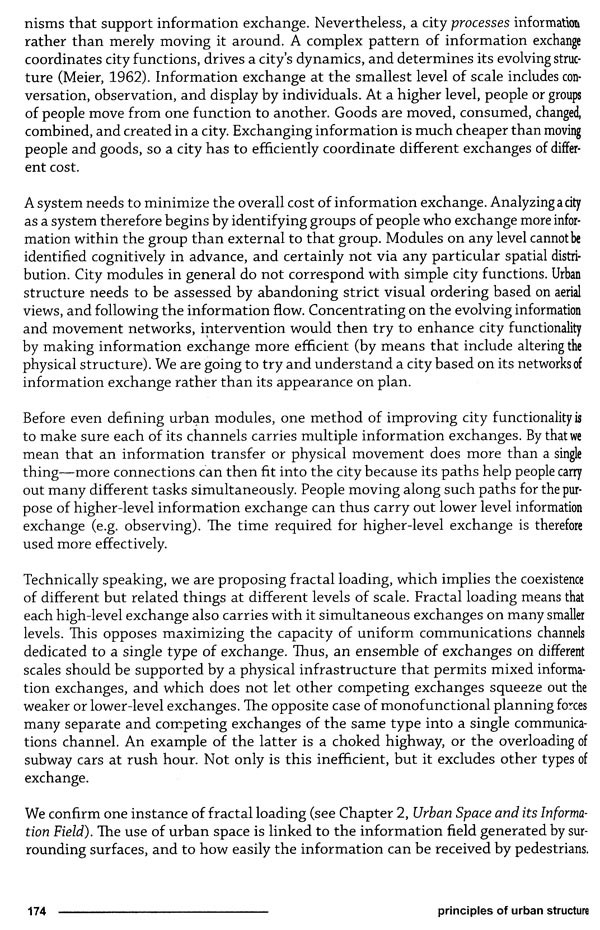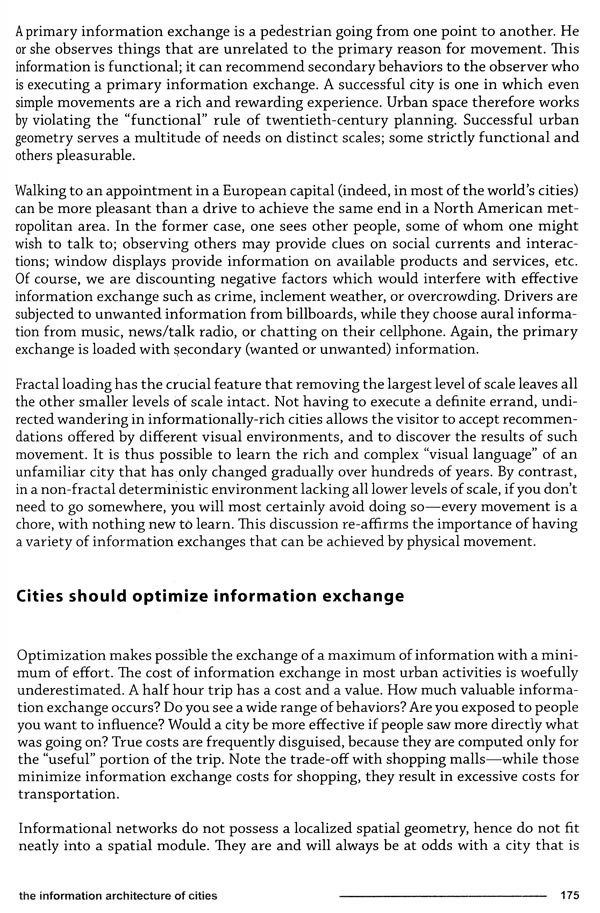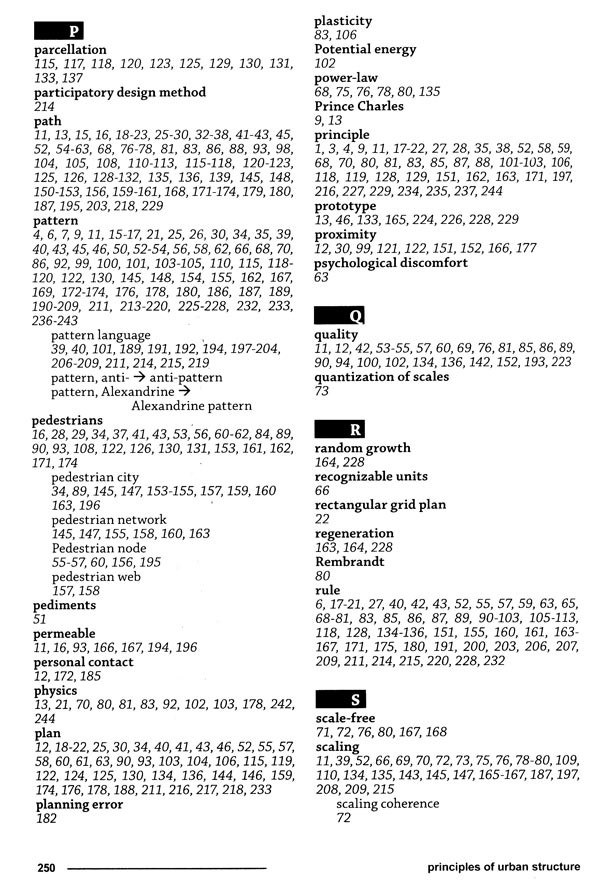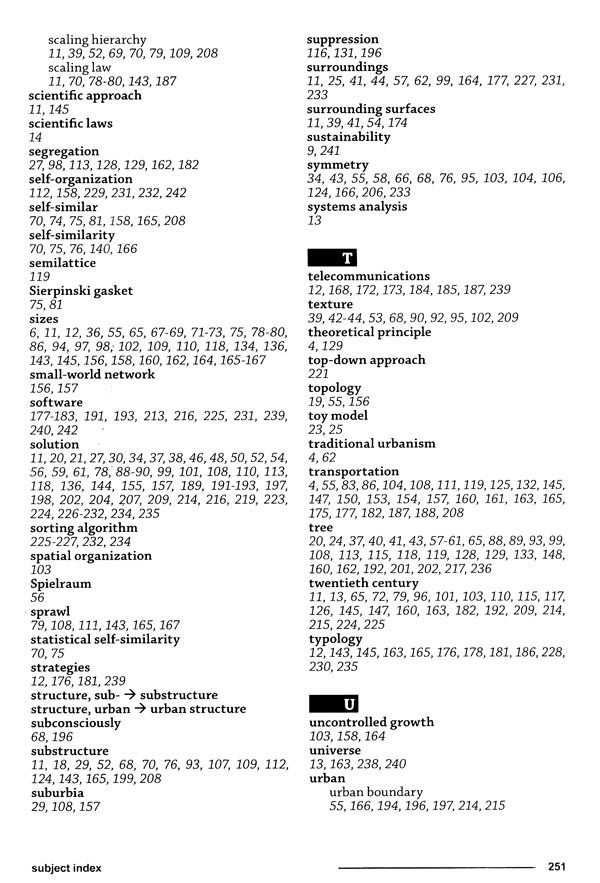
Principles of Urban Structure- With Contributions by L. Andrew Coward and Bruce J. West Chapter-introductions by Arthur van Bilsen
Book Specification
| Item Code: | UAO221 |
| Author: | Nikos A. Salingaros |
| Publisher: | Vajra Books, Nepal |
| Language: | English |
| Edition: | 2014 |
| ISBN: | 9789937623322 |
| Pages: | 252 (Throughout B/w Illustrations) |
| Cover: | PAPERBACK |
| Other Details | 9.00 X 6.00 inch |
| Weight | 390 gm |
Book Description
A city needs to be understood instead as a complex interacting system. Different urban networks overlap to build up a living city's dynamic complexity. This book pioneered new instruments of urban planning such as allometric scaling and power laws in city morphology, later taken up by other prominent researchers. It introduced the concepts of "fractal loading" and the brain-computer analogy. Mechanisms of emergence, information, self organization, and adaptivity connect the fractal city on multiple levels. By showing how to relate and implement all these concepts in the city, this book contributes to the beginnings of a new urban science.
"The articles selected for this book establish Nikos Salingaros as a modern networking thinker in urbanism (and architecture). Salingaros has asked the right question, that is: 'how to integrate physical connection with electronic connections?: He has made an important contribution to the urgent search for new instruments of urban planning and design, conceptually by showing how to connect the fractal city as well as by teaching us how to re-read time-honored classics, in particular, Christopher Alexander." From the Prologue by Paul Drewe.
No such treatment of the underlying principles of urban form and structure exists at the present time. I have tried to look at cities from different perspectives, and to combine those rather distinct aspects into one broad picture. Starting with urban net works, which I feel provide the foundation for a healthy urban fabric, I argue that a living city depends on an enormous number of different paths and connections. Fur thermore, the evolution of an urban region from "dead" to "alive" is sudden. Turning to the way the built environment interacts with people, I try to explain why some urban spaces are used, while others are avoided. An information field generated by surround ing surfaces determines the position of paths and activity nodes. As the foundation of a human-based conception of urbanism, I establish the priority of the pedestrian realm.
The distribution of paths and units in any living system (including a living city) fol lows an inverse-power scaling law-there should be only a few components of large size, several of intermediate size, and very many of small size. This result is extremely important. The human mind establishes a deep connection with the environment by processing geometrical information from its surroundings. We instinctively recog nize what looks and feels "natural" by its scaling hierarchy, and react accordingly. The mathematical qualities of meaningful environments are precisely those that manifest themselves in fractal subdivisions; ie, an inverse-power distribution of sizes.
Christopher Alexander's "patterns" encapsulate information about recurring design solutions and human activities. A pattern is a traditional, evolved solution. Linking observed patterns together combines patterns on urban interfaces to define the per meable urban regions essential to any living city. A city needs to be understood as a complex interacting system. Coherent city form emerges from assembling components hierarchically, using intense local couplings together with long-range connections that reduce disorder. Urban coherence can only come about from the correct combination of geometry and connectivity.
**Contents and Sample Pages**
